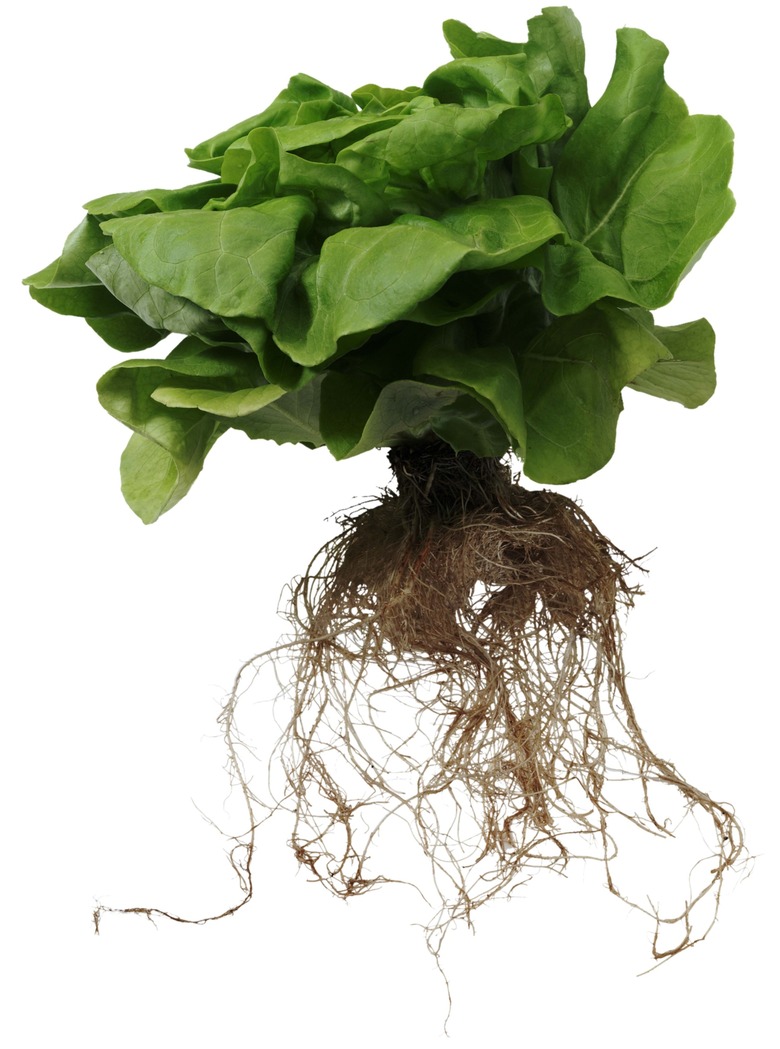Principles Of Hydroponics
If you have lots of water but not a lot of soil, you may want to consider hydroponics cultivation, a method of growing plants without soil. For centuries, humans have experimented with watery ways of growing edibles, and today many commercial growers and home gardeners employ principles of hydroponics to grow tasty, fresh vegetables.
If you have lots of water but not a lot of soil, you may want to consider hydroponics cultivation, a method of growing plants without soil. For centuries, humans have experimented with watery ways of growing edibles, and today many commercial growers and home gardeners employ principles of hydroponics to grow tasty, fresh vegetables.
Basics
Hydroponics is the soil-less cultivation of plants in either of two ways. The term "hydroponic gardening" can refer to growing plants, usually vegetables, in a simple solution of water and nutrients. The term "hydroponics" also is used to refer to the cultivation of plants in an inert substrate or aggregate, such as perlite, vermiculite, sand or rock wool. In that type of hydroponic cultivation, plants receive nutrients from a solution that passes over their roots at regular intervals.
Benefits
Hydroponic production eliminates problems from soil-borne parasites, fungi, weeds and diseases, optimizing plant growth through the exact delivery of nutrient solution to each plant. Hydroponic cultivation has been demonstrated to increase crop yields considerably compared to conventional growing methods. Hydroponically grown plants often grow faster and reach maturity faster than conventionally grown plants. Plants grown in soil expend energy developing extensive root systems to search for nutrients. Because the roots of hydroponic plants are constantly supplied with the nutrients the plants need, those plants can use more energy on growth above the root zone.
- If you have lots of water but not a lot of soil, you may want to consider hydroponics cultivation, a method of growing plants without soil.
- The term "hydroponic gardening" can refer to growing plants, usually vegetables, in a simple solution of water and nutrients.
Set-Up
Setting up a hydroponics growing system varies based on the hydroponics method. If an aggregate is used, a basic set-up has a trough containing the aggregate, and the trough has a drain at one end. A nutrient solution is poured or pumped into the end of the trough that has no drain, and when the trough is flooded, the solution drains out the trough's other end. A pump and return hose can be used to rig a continuous system. In a water-culture hydroponic system, the plants must be attached to physical supports above the nutrient solution, allowing the plants' roots to float in the solution. Light must be blocked from the container to promote good root growth and to prevent algae growth. The solution needs to be aerated mechanically so the plants receive plenty of oxygen.
- Setting up a hydroponics growing system varies based on the hydroponics method.
- In a water-culture hydroponic system, the plants must be attached to physical supports above the nutrient solution, allowing the plants' roots to float in the solution.
Nutrients
The water in which hydroponic plants grow or that passes over the plants' roots must contain proper nutrients to ensure the plants are healthy. Commercial mixtures containing important nutrients such as nitrogen, phosphorus, potassium, calcium, magnesium and sulfur are available at garden stores. These preparations often also include trace elements such as iron, manganese, boron, molybdenum, zinc, copper and chlorine — all necessary for healthy plant growth. Measured in parts per 1 million (ppm), the amount of mixture added to a hydroponic system depends on what grows in that system. Tomato and pepper plants, for example, need 1,200 to 1,500 ppm during their flowering stage and 500 to 700 ppm when their fruits are growing.
